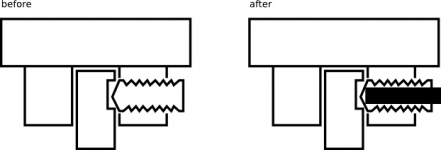xwhatsit
Well-known
Hello,
I'm having a bit of difficulty working out how to remove seized or stuck grub screws.
I thought I'd post this here as I'm sure you come across this problem regularly on old and abused lenses.
I've now had this problem twice and both times it's prevented me continuing repairs. Once on a nice Minolta E-Rokkor 50/4.5 with dodgy aperture blades, and now on my recently-acquired Yashica YF's shutter speed dial. Tiny brass screws can't take a great deal of torque from a screwdriver!
If it was one of my motorbikes, I'd soak the offending bolt in penetrating lubricant for a day or two, maybe apply a little bit of heat, and in the worst case scenario I'd drill it out. Now applying penetrating lubricant to a lens or shutter speed dial doesn't seem sensible, nor does heat. And drilling out a grub screw -- is that even possible?
Any advice would be much appreciated.
Cheers,
-Tom
I'm having a bit of difficulty working out how to remove seized or stuck grub screws.
I thought I'd post this here as I'm sure you come across this problem regularly on old and abused lenses.
I've now had this problem twice and both times it's prevented me continuing repairs. Once on a nice Minolta E-Rokkor 50/4.5 with dodgy aperture blades, and now on my recently-acquired Yashica YF's shutter speed dial. Tiny brass screws can't take a great deal of torque from a screwdriver!
If it was one of my motorbikes, I'd soak the offending bolt in penetrating lubricant for a day or two, maybe apply a little bit of heat, and in the worst case scenario I'd drill it out. Now applying penetrating lubricant to a lens or shutter speed dial doesn't seem sensible, nor does heat. And drilling out a grub screw -- is that even possible?
Any advice would be much appreciated.
Cheers,
-Tom


